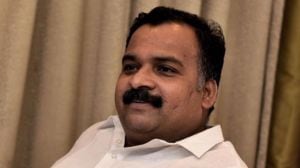The schoolboy as DM
Following the Hota Committee Report, a proposal has been mooted that recruitment to the All India Services should be done at the Higher Seco...

Following the Hota Committee Report, a proposal has been mooted that recruitment to the All India Services should be done at the Higher Secondary Certificate Examination level. The cadets so selected should go through a four-year training programme, at the end of which they would graduate to a Bachelors degree and be sent out on postings. It is suggested that this would catch them young and enable suitable training to make them good civil servants. The example of the armed forces is quoted where the mainstream are recruited after leaving school. It may be remembered here that at present, graduation is the minimum level at which recruitment is done to the All India Services, the Central Service and even to Class I and II State Services.
Comparisons are always odious, but nevertheless such comparison must be made between service in the armed forces and the civil services. In the armed forces, the objective is to produce officers cast in a single mould with uniform characteristics. This can only be done at a relatively young age, which is why the major stream of recruitment is at the school-leaving level. There is a great deal of physical training and toughening needed in the armed forces and unless one starts fairly young the body cannot be brought to the required level of physical fitness. Academic training is co-terminus with physical training and the training is a fine balance between physical and cerebral development.
The requirements for the civil service are completely different. Here life is more sedentary, more atuned to work in office and in the field, designed more for close interaction with people, specifically meant to help in the formulation of policies and subsequent implementation. No doubt the police has a hard physical role, but it is not quite the same as that of the army. We need here a person at the stage of initial recruitment who has been through the rigours of the education system, at least up to the level of graduation, so that there is a development of the mental faculties in an academic rather than a service background.
This is what Lord Welleslley, the then Governor General of India, said of the East India company officials in 1800, 8216;8216;I have found officers of the Secretariat to possess the nature of clerks with the talent of statesmen, but their education had been cut short at the age when it began to be most valuable; their first year in India had usually been spent in the menial, laborious, unwholesome and unprofitable duty of mere copying clerks8217;8217;. In order to remedy the situation he set up the College of Fort William at Calcutta for the education, designed on the lines of a college at Oxford or Cambridge.
In 1853 a system of competitive examinations for entrance to the civil service in India was introduced, though it was much resented by the older generation. One can consider the beginning of the Indian Civil Service ICS to be in 1853, the year in which the competitionwallahs started entering the service in India. The competition was based on the principle that, 8216;8216;a civil servant of the East India Company should have received the best, the most liberal, the most finished education that his country affords.8217;8217; The competitionwallah went to Oxford or Cambridge or the School of Oriental Studies for Training in Britain, after which he went to a district for his field training. To that extent our system of the three service academies at Mussoorie, Hyderabad and Dehradun for the IAS, IPS and IFS respectively, together with the Academy for the Foreign Service at Delhi, is a much better system because if formalises training in a specialised institute designed for the purpose.
I have mentioned the history in the process of evolution of the civil service in India because it started with school-boys at the stage of initial recruitment, then went on to a specialised college, then to a regular competition for which graduation was the minimum qualification and now the present system where we recruit through an examination after graduation, then train in a service academy and have subsequent training in the field. Reversing the training to the level of a school would be an ill-advised move.
We should not interfere with the present minimum qualification of eligibility to appear in a competitive examination. At the same time we must revert to a system of recruitment between the ages of 21 and 24, with a two- year concession in the upper-age limit for OBCs and three years for candidates in the SC/ST category. This means that no one above the age of 27 would be eligible to appear in a competitive examination and no one above the age of 24 would be eligible in the general category.
We are rubbishing the very idea of universities by reducing the eligibility level for recruitment to the civil service. The university provides the ability to absorb training. That is why the civil service must have graduation as the minimum entry point. Whereas regimentation is necessary in the armed forces, it is the one quality to be avoided in a civil service. Recruitment at the school-leaving level can only lead to regimentation.
The writer is a former civil servant
- 01
- 02
- 03
- 04
- 05































